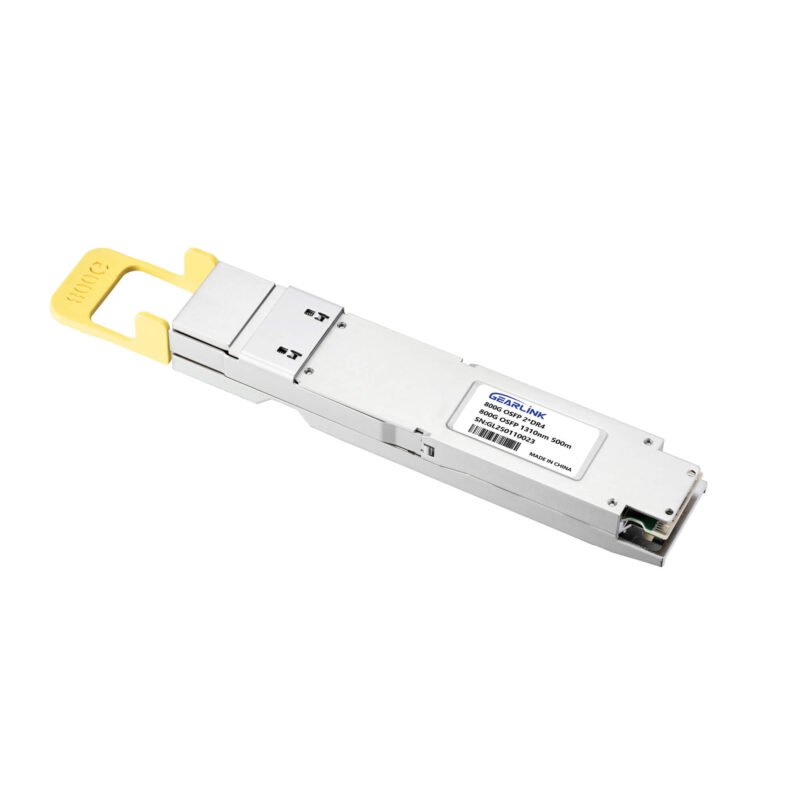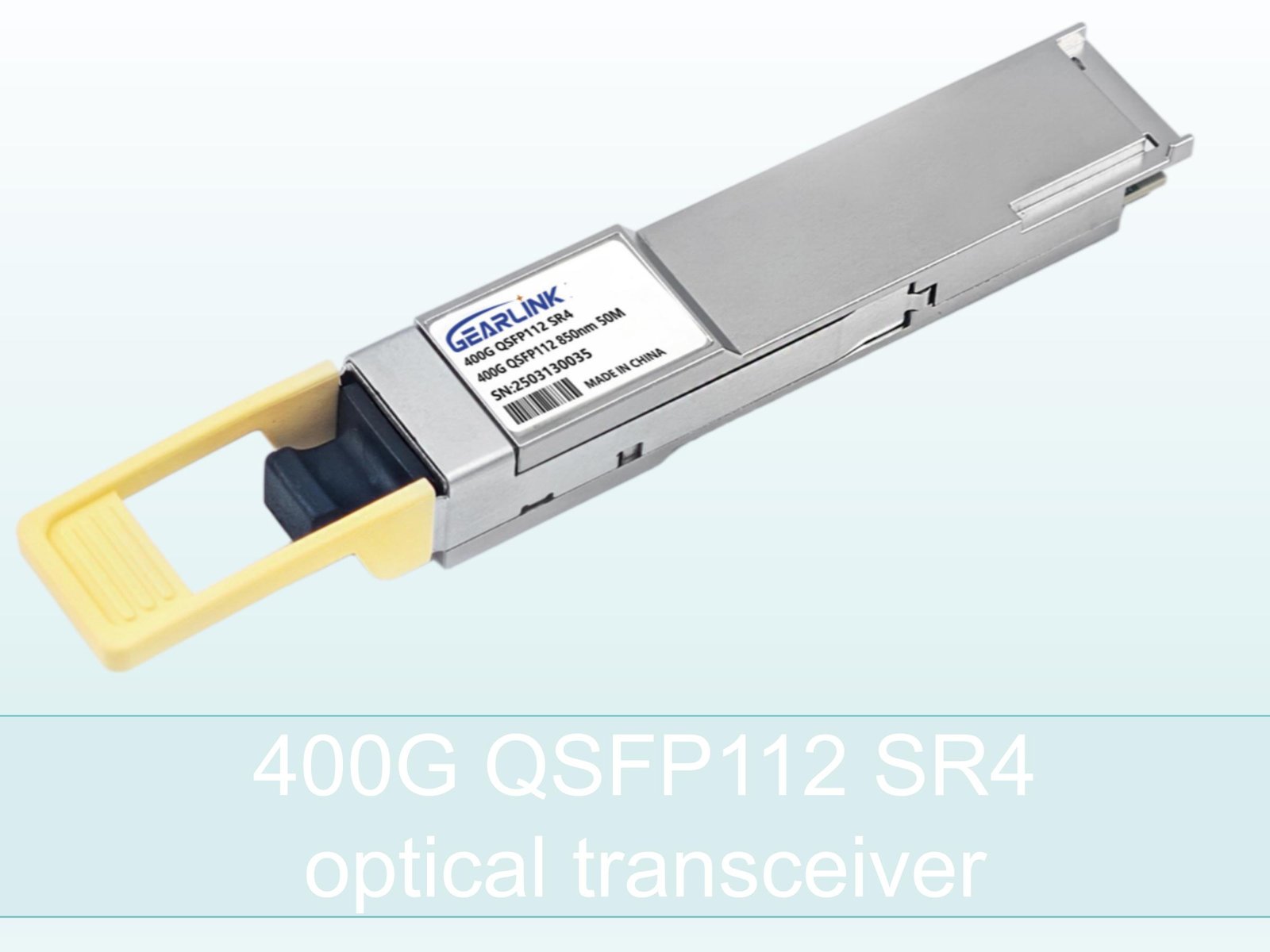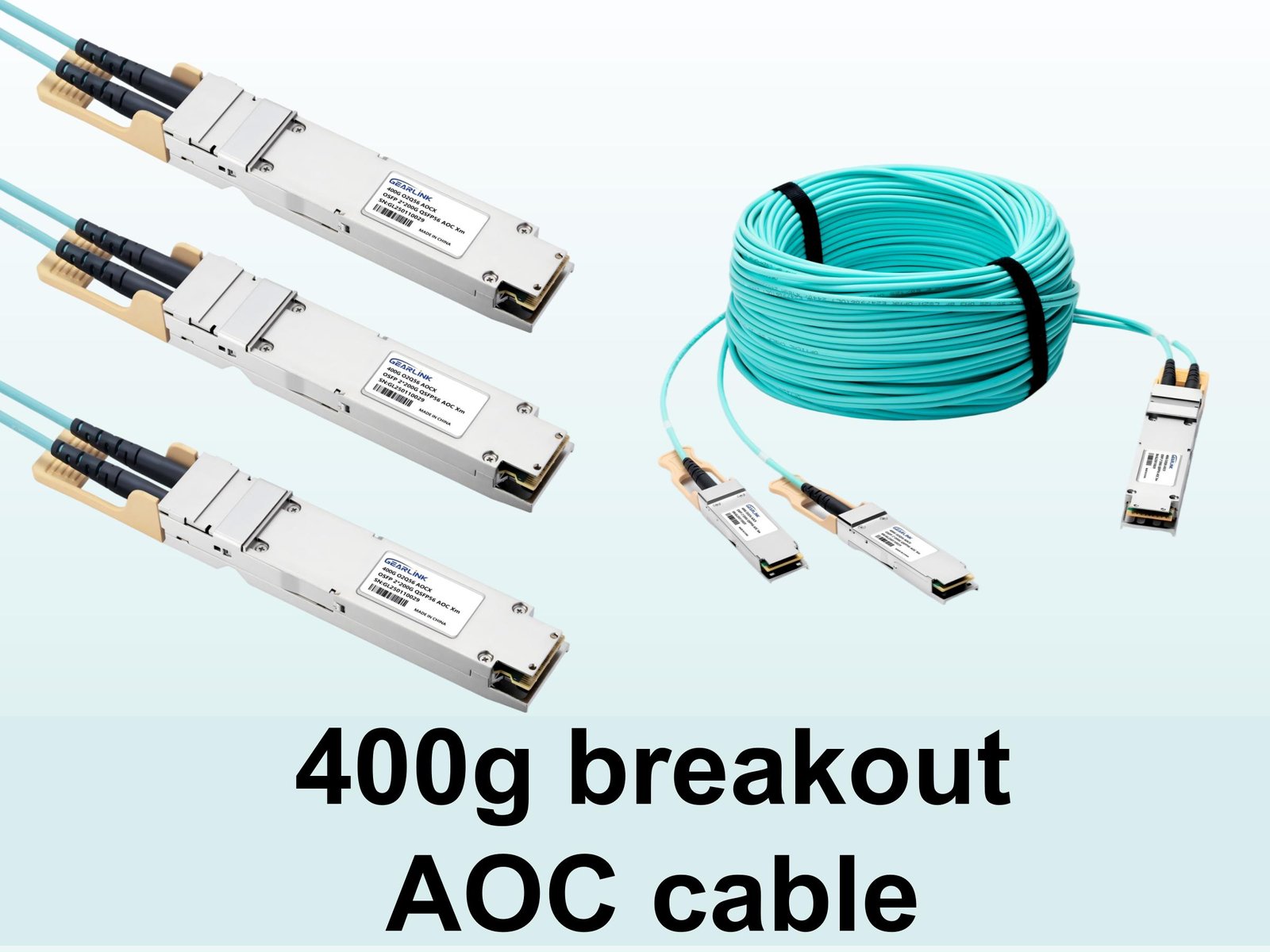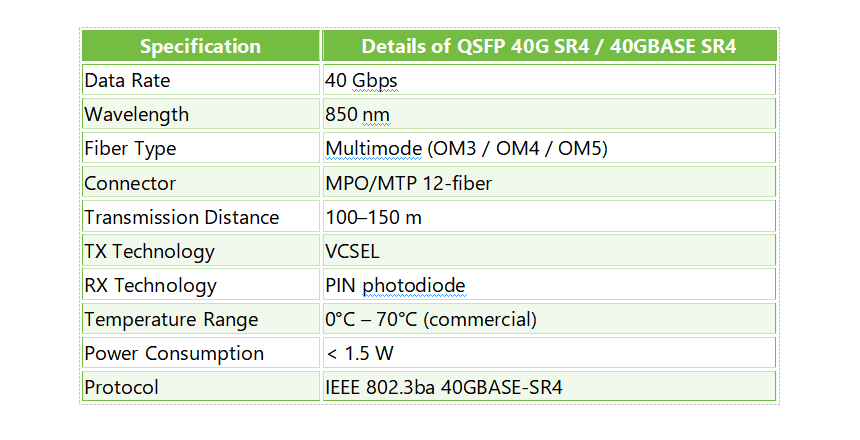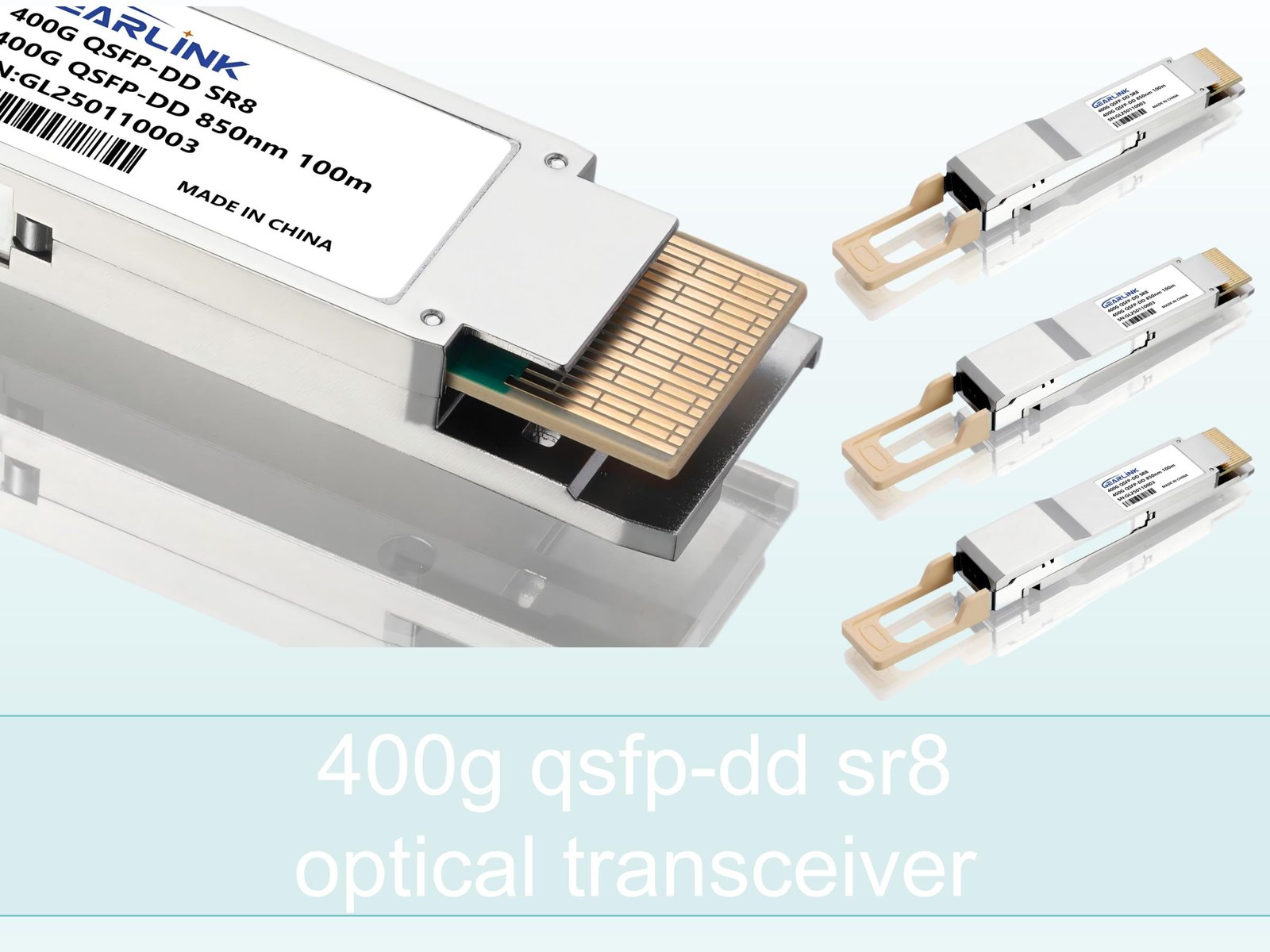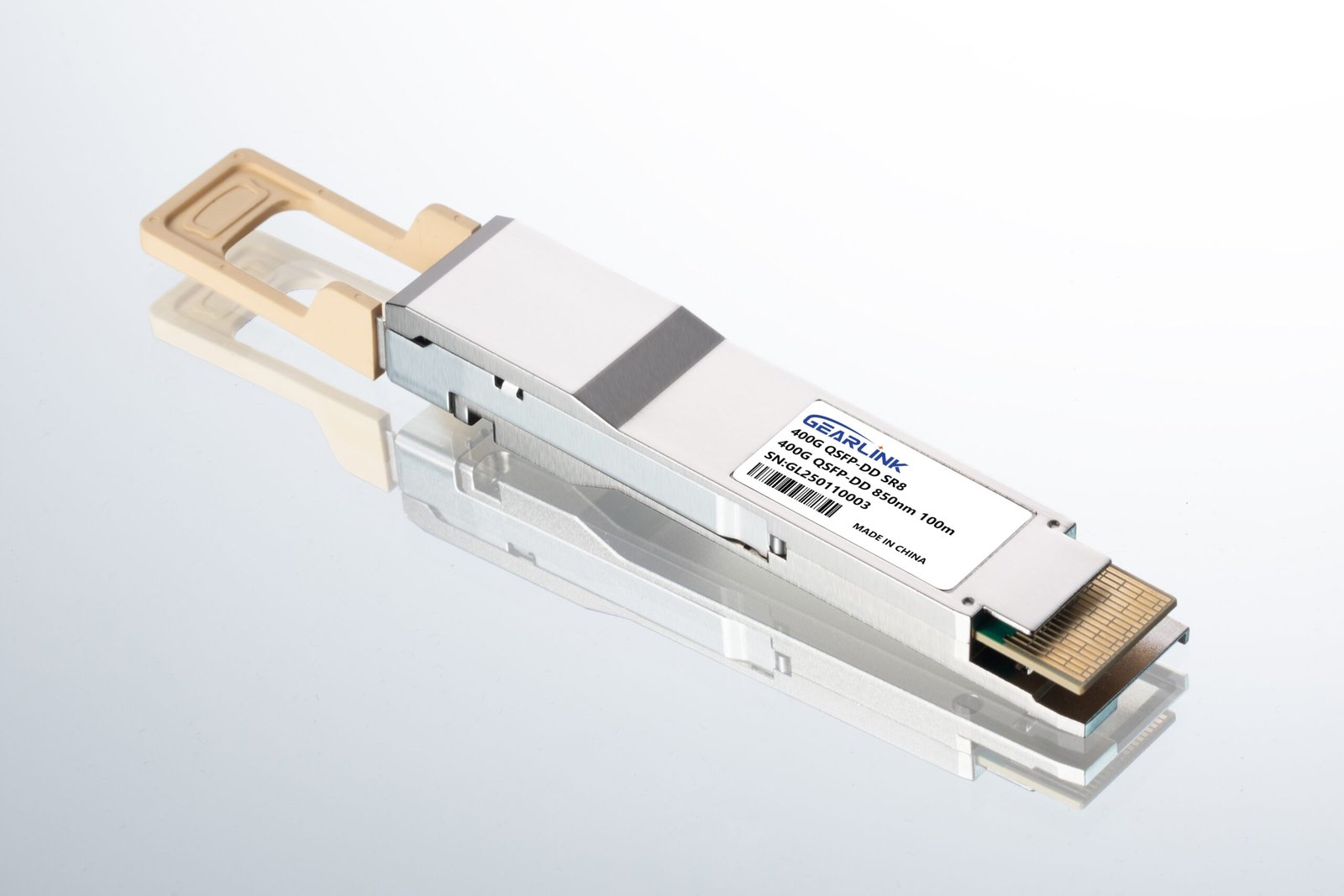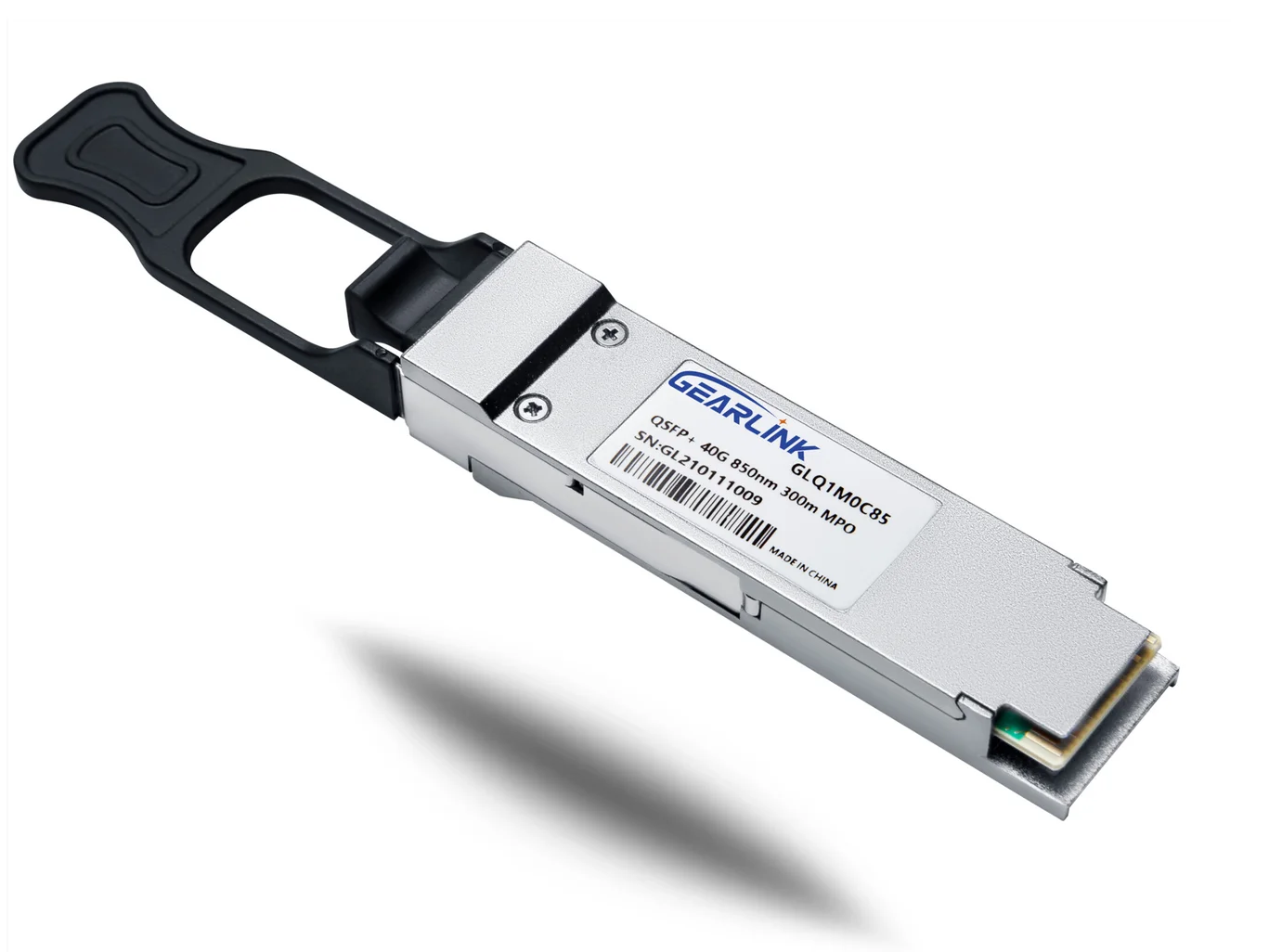The New Era of 800G Ethernet: The Driving Force Behind AI and Hyperscale Data Centers
The Inevitability of 800G Technology: The Market Revolution Driven by AI and HPC
The modern data center is experiencing an unprecedented surge in bandwidth demand, with a primary catalyst being new workloads such as artificial intelligence (AI) training, large language models (LLMs), and high-performance computing (HPC). These applications require the real-time processing and analysis of massive data sets, which places immense pressure on network interconnects in terms of bandwidth, latency, and power efficiency. While traditional 400G optical modules have become an industry standard, their capacity and performance are beginning to bottleneck in dense computing environments, such as large-scale GPU clusters.
To address this exponential growth in bandwidth needs, the industry is accelerating its transition to 800G Ethernet. This technology is not merely a simple doubling of capacity ; it represents a fundamental architectural shift. It provides the essential foundation for building a new generation of data centers, ensuring efficient and scalable data transmission to maintain a competitive edge in the AI race.
800G DR8 transceiver solutions are becoming a crucial tool for meeting this challenge by offering higher bandwidth, predictably low latency, and greater scalability while simultaneously reducing overall network complexity and the cost per bit.
The Technological Foundation of 800G: PAM4 Modulation and Parallel Channel Architecture
The realization of 800G technology relies on two core innovations: PAM4 modulation and a parallel channel architecture. An
800G DR8 module typically employs an 8x100G architecture, which achieves a total data rate of 800 Gbps using eight independent data lanes. The electrical interface for each lane operates at 100 Gbps and uses Pulse Amplitude Modulation 4-level (PAM4) technology. PAM4 effectively doubles the data transmission rate by encoding 2 bits of information per symbol without increasing the baud rate.
A typical 800G DR8 transceiver architecture is composed of several key components :
- Electrical Interface (8x100G): This connects the switch to the module’s internal components, transmitting data over eight 100 Gbps electrical channels.
- PAM4 Clock Data Recovery (CDR)/Digital Signal Processor (DSP): The DSP handles complex signal processing tasks such as equalization, error correction, and re-timing incoming data to reduce jitter.
- Drivers & Modulators (x8): Drivers amplify the electrical signals, while modulators convert them into optical signals.
- TIAs (x8) & Photodetectors: These are the receiver-side components that convert the optical signals back into electrical ones.
- Optical Interface (8x100G): This is the optical part of the module that carries data in the form of light pulses.
Decoding the 800G DR8 Standard: Defining Your Network Connectivity
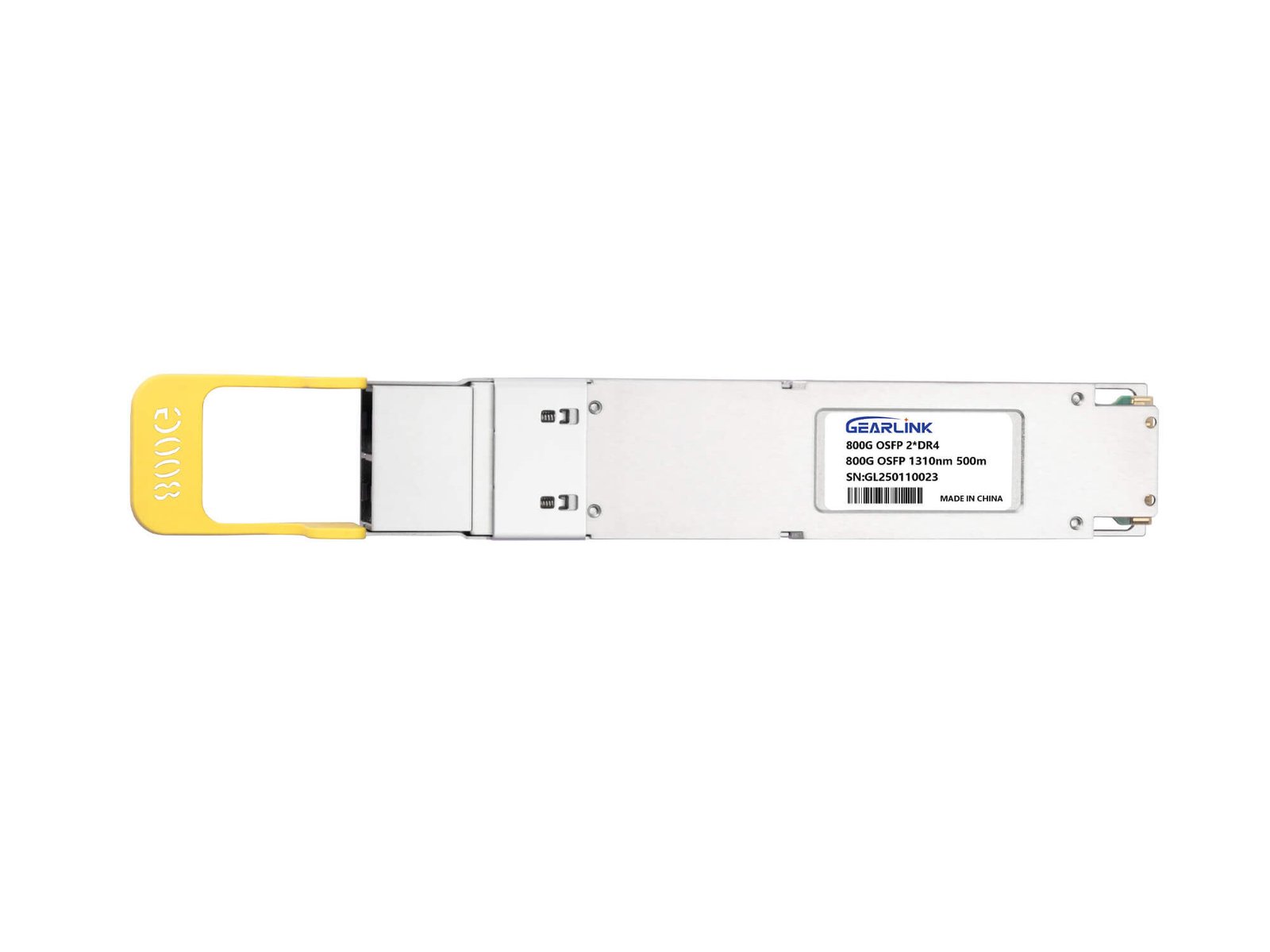
A Deep Dive into the “800G DR8” Naming Convention
The “800G DR8” designation itself contains a wealth of technical information.
- 800G: This indicates the module’s total aggregate data rate of 800 Gbps.
- DR: This stands for “Direct Reach,” which specifies that the module is designed for transmission over single-mode fiber (SMF). These modules typically use optical signals in the 1310nm band.
- 8: This denotes that the module uses eight parallel 100 Gbps lanes.
These modules adhere to multiple industry standards to ensure interoperability :
- IEEE P802.3ck: Defines the 8x100G PAM4 electrical interface standard.
- IEEE 802.3bs: Defines the 800GBASE-DR8 Ethernet application.
- QSFP-DD MSA & OSFP MSA: These define the module’s physical dimensions, electrical interface, and thermal management.
- CMIS (Common Management Interface Specification): This allows for real-time monitoring of the module’s operating parameters through an I2C interface, enabling digital diagnostics.
Key Technical Specifications and Operating Characteristics
These modules are an ideal choice for intra-data center interconnects and short-distance data center interconnects (DCI) due to their superior performance. The main technical specifications are as follows:
- Transmission Distance: The standard 800G DR8 module has a maximum transmission distance of 500 meters over single-mode fiber (SMF). There are also variants, such as DR8+, that extend the reach to 2 kilometers.
- Connector Type: They typically use MPO-16 or dual MPO-12/APC connectors.
- Modulation Technology: Each channel uses 100G PAM4 modulation.
- Operating Temperature: Commercial-grade modules operate within a temperature range of 0°C to 70°C.
- Power Consumption: Module power consumption is typically between 16.5W and 17W.
An In-depth Look at the Optictran 800G DR8 Product Family
800GBASE 2 x DR4/DR8 OSFP PAM4 1310nm 500m DOM Dual MPO-12/APC SMF Optical Transceiver Module
Price range: NT$1,699 through NT$1,768
Overview of Optictran’s 800G Solution
Optictran’s 800G solutions stand out for their exceptional performance and flexibility. A prime example is the “800GBASE 2 x DR4/DR8 OSFP PAM4 1310nm 500m DOM Dual MPO-12/APC SMF Optical Transceiver Module,” a high-performance, dual-port module. It is designed for large-scale data center and HPC environments, supporting both Ethernet and InfiniBand NDR protocols to ensure seamless integration into various network architectures. The module contains two independent 400 Gbps engines that utilize a dual MPO-12/APC connector to achieve a total bandwidth of 800 Gbps.
Core Technical Specifications Table
To assist technical professionals in their rapid assessment and purchasing decisions, the following table summarizes the key technical parameters of the Optictran 800G DR8 transceiver. These specifications come directly from the product sheet, ensuring their accuracy and reliability.
| Parameter | Value |
| Brand | WHGEARLINK |
| Description | OSFP 800G 1310nm 500m MPO-12/APC |
| Data Rate | 800G |
| Form Factor | OSFP |
| Wavelength | 1310nm |
| Reach | 500m |
| Connector | MPO |
| Operating Voltage | 3.3V |
| TX Output Power | -2.9 to 4.0 dBm |
| RX Sensitivity | -5.9 dBm |
| Power Consumption | 17W |
| Operating Temperature | 0 to 70°C |
| DOM Support | Yes |
| Cable Type | Single-Mode Fiber (SMF) |
Key Features and Advantages
Beyond its hard technical specs, the Optictran 800G DR8 module offers several practical features designed to simplify deployment and improve network performance :
- Hot-Pluggable Design: It supports online installation and removal without disrupting system operation.
- High Safety & Environmental Compliance: The module meets Class 1 laser safety standards and is RoHS compliant.
- Digital Diagnostic Monitoring (DDM): The built-in DDM functionality provides real-time monitoring via the I2C interface, allowing professionals to view key parameters like temperature, voltage, and optical power for easy maintenance and troubleshooting.
- Flexible Breakout Configurations: The module supports multiple data rates and flexible “breakout” modes to adapt to different network needs. For example, one 800G port can be broken out into two 400G ports or eight 100G ports, which is crucial for network upgrades and expansion.
A Comparative Analysis: Key Considerations for Technical Selection
In this section, we will delve into the critical factors beyond basic performance parameters that technical professionals must consider when choosing an 800G DR8 transceiver. These choices directly affect network port density, power consumption, heat dissipation, and overall cost.
The Form Factor Debate: QSFP-DD vs. OSFP
QSFP-DD (Quad Small Form Factor Pluggable Double Density) and OSFP (Octal Small Form Factor Pluggable) are the two primary form factors for 800G DR8 transceivers. While both support 800G speeds, their design philosophies and application scenarios differ.
- Port Density: The QSFP-DD form factor is more compact, approximately 15% narrower than OSFP. This allows for higher port density on a single switch panel, making it ideal for space-constrained leaf switches.
- Thermal Performance: Due to its larger size and PCB area, OSFP can accommodate more robust heat sinks and provide better airflow management, resulting in superior thermal performance. This makes it an excellent choice for core switches that require high power and stable operation.
- Backward Compatibility: The QSFP-DD design is intentionally backward compatible with existing QSFP+ cages, which can simplify network upgrades and reduce deployment costs.
| Feature/Metric | OSFP (Octal SFP) | QSFP-DD (Quad SFP-DD) | Notes |
| Physical Dimensions | 21.5 mm × 54 mm × 12.4 mm | 18.35 mm × 54.5 mm × 12.4 mm | QSFP-DD is narrower, enabling higher port density |
| Heat Dissipation | Better, up to ~30% | Good, but more confined than OSFP | OSFP’s larger PCB area aids heat dissipation |
| Backward Compatibility | None | Compatible with QSFP+ / QSFP28 | QSFP-DD simplifies upgrades for existing networks |
| Max Power Budget | ~18W | ~16W | Values vary by module type and vendor |
| Typical Use Case | High-density core switches with cooling headroom | Port-dense leaf switches, or incremental upgrades | Different design considerations for different network architectures |
Signal Processing Technology: DSP vs. LPO
The choice of signal processing architecture has become a key area of innovation for 800G optical modules: the traditional DSP (Digital Signal Processor) solution versus the emerging LPO (Linear-drive Pluggable Optics) solution.
A DSP solution integrates a dedicated DSP chip within the module to perform complex signal processing, such as equalization, re-timing, and Forward Error Correction (FEC). This ensures signal integrity and reliability, especially for longer-distance transmissions. However, DSP chips consume significant power and add to data transmission latency.
In contrast, an LPO solution removes the DSP chip from the module and shifts the signal processing functionality to the host’s ASIC (Application-Specific Integrated Circuit), typically on the switch. This architecture offers significant benefits :
- Ultra-Low Power Consumption: LPO modules can have power consumption as low as 8.5W, which is roughly 50% less than traditional DSP solutions. This dramatically reduces energy consumption and cooling costs in the data center.
- Significantly Reduced Latency: By eliminating the DSP processing, LPO modules greatly reduce end-to-end data transmission latency. This is crucial for latency-sensitive applications like AI training and supercomputing.
- Lower Total Cost: While the component cost for LPO solutions may be slightly higher, the overall savings from reduced energy and cooling costs accelerate the return on investment for large-scale deployments.
| Feature/Metric | Traditional DSP Solution | LPO Solution |
| Signal Processing Location | Inside the module | On the host switch ASIC |
| Power Consumption | Higher, typically >16W | Very low, typically <9W |
| Latency | Higher | Very low |
| Complexity | More complex module design | Simpler module design |
| Primary Use Case | General applications prioritizing signal integrity | AI/HPC clusters sensitive to latency and power consumption |
Optical Engine Technology: Silicon Photonics (SiPh) vs. EML
The optical engine within 800G DR8 modules primarily relies on two key technologies: Silicon Photonics (SiPh) and EML (Electro-absorption Modulated Laser). EML is a mature, traditional technology that excels at long-distance transmission. Silicon photonics, on the other hand, is a disruptive technology that integrates multiple optical components onto a single silicon chip using mature CMOS manufacturing processes for mass production.
- Integration and Size: Silicon photonics allows for a high degree of integration of multiple optical components onto a single, compact chip, which significantly reduces the module’s size and complexity. This is vital for achieving high port density.
- Cost-Effectiveness: By leveraging existing semiconductor fabrication processes, silicon photonics enables the mass production of optical components, which considerably lowers manufacturing costs.
- Power Consumption: SiPh modules are typically more energy-efficient than EML modules because they can eliminate the need for a TEC (thermoelectric cooler), which is used in EML modules to manage temperature and ensure stable performance. According to some estimates, SiPh modules can reduce power consumption by up to 20%.
These two technologies are not strictly superior to one another; rather, they are optimized for different application scenarios. EML technology maintains its advantage in long-distance transmission, while silicon photonics, with its low cost, low power consumption, and high integration, is becoming the ideal solution for high-density, short-distance interconnects within hyperscale data centers. Optictran is notable for offering products based on both EML and silicon photonics solutions , allowing customers to choose based on their specific needs.
Practical Applications and Deployment Scenarios
Empowering AI and HPC Applications
These modules are of critical importance in the AI and HPC fields. In modern data centers, their primary use is within Spine-Leaf architectures. The
800G DR8 module’s high bandwidth and low latency make it a crucial component for connecting Top-of-Rack (ToR) switches to Spine switches. Additionally, in InfiniBand networks, these modules facilitate efficient interconnects between switches and high-speed network adapters (HCAs).
Flexible Breakout Configuration Solutions
The versatility of the 800G DR8 module is evident in its support for multiple breakout configurations :
- 800G Direct Connection: This is used for high-speed switch-to-switch interconnects, providing stable, ultra-high-bandwidth network links.
- 2x400G Breakout: One 800G port can connect to two 400G devices, which is an ideal solution for network upgrades.
- 8x100G Breakout: This configuration breaks out one 800G port into eight 100G ports. This is vital for connecting a large number of 100G servers or network devices and provides a smooth migration path.
Common Issues and Troubleshooting Guide
This section provides practical troubleshooting advice to help technical personnel quickly identify and resolve problems, demonstrating a commitment to in-depth customer support.
Analysis of Common Failure Causes
- High Bit Error Rate (BER): This often indicates poor signal integrity. Possible causes include dirty or damaged fiber end-faces, excessive optical loss, or incorrect FEC (Forward Error Correction) configuration.
- Unstable or Interrupted Link: This can be caused by physical connection issues, suchs as a broken fiber, a misaligned connector, reversed TX/RX ports, or device incompatibility.
- Thermal Failure: The high power consumption of 800G modules makes them susceptible to temperature issues. High ambient temperatures in the equipment rack, inadequate airflow, or a poor module heat sink design can all lead to performance degradation or even permanent damage.
Structured Troubleshooting Steps
- Check Physical Connections: Begin by visually inspecting the fiber connector end-faces and using professional tools to clean them. Ensure all cables are securely connected and confirm the TX/RX ports are correctly linked.
- Verify Module Status and Compatibility: Use the DDM function to monitor optical power, temperature, and voltage in real time. If the received optical power is too low, it typically indicates a link problem. Also, confirm that the optical module is compatible with the switch or host platform.
- Inspect Configuration and Firmware: Ensure that the port rate and FEC mode settings are consistent on both ends of the link. It is advisable to regularly check and update device and module firmware to the latest versions.
- Perform In-depth Diagnostics: If the above steps do not solve the problem, consider environmental factors and use instruments for a more detailed analysis. An optical power meter can measure signal levels. For complex issues, a Bit Error Rate Tester (BERT) or an oscilloscope can be used to analyze the signal eye diagram to pinpoint the root cause.
Why Choose Optictran: Value Proposition and Conclusion
Strategic Positioning: Offering Flexible Hybrid Technology Solutions
Optictran’s core value lies in its strategic flexibility. Rather than adhering to a single technological path, Optictran offers a comprehensive product portfolio based on a variety of solutions, including EML/Silicon Photonics and DSP/LPO. This approach enables customers to make the best decision for their specific application scenarios and performance requirements.
- For traditional networks that require signal integrity and backward compatibility, the DSP solution is a solid choice.
- For emerging AI clusters, Optictran’s LPO modules provide an ideal solution with ultra-low latency and power consumption.
- For applications focused on cost-effectiveness and high density, the company’s silicon photonics-based modules offer a superior solution.
Quality and Reliability
Optictran is committed to providing high-quality, highly reliable products. The company’s 800G products strictly adhere to industry standards, including IEEE, MSA, and CMIS , and undergo rigorous testing. This ensures stable performance in real-world deployments and provides customers with a reliable connectivity solution.
Conclusion
800G technology is the necessary choice for meeting the bandwidth challenges of the current AI and HPC era. It achieves unprecedented data transmission capabilities through PAM4 modulation, parallel channel architecture, and innovative form factors. Within the DR8 standard, different technology options—such as QSFP-DD vs. OSFP, DSP vs. LPO, and EML vs. Silicon Photonics—provide data center operators with the flexibility needed to build high-performance, energy-efficient, and future-ready networks.
As a specialist in this field, Optictran, with its comprehensive product portfolio and deep understanding of emerging technologies, offers solutions that not only meet today’s 800G requirements but also positions itself as a trusted partner for data center operators. Optictran’s products empower customers to build flexible, efficient, and scalable network architectures to handle the continuously growing data traffic of tomorrow.
